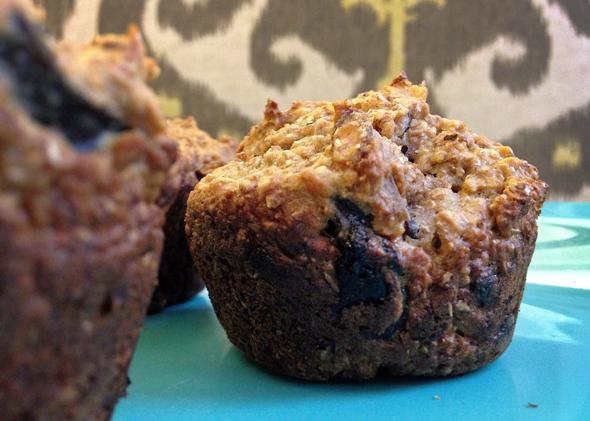I am resolutely opposed to health- and diet-related New Year’s resolutions. They fray your willpower at the most depressing time of the year. They cause yoga studios and gyms to be annoyingly crowded in the month of January. And they are usually as doomed as Billy Squier’s career after “Rock Me Tonite.”
However, I am sympathetic to the idea of following the winter holidays with a period of impulse control and healthy eating—not because doing so makes you a better person, but because doing so makes you feel better, physically and psychologically. (For a few weeks, at least. Eventually your appetite for alcohol, sweets, and/or your other favorite consumable vice will return.)
Bran muffins have long been an emblematic “health food.” This is due in large part to a 1980s marketing campaign that attempted to convince Americans that eating oat bran would lead them to live forever. This was an exaggeration, but bran is still pretty good for you: It’s the insanely high-fiber outer part of a grain that’s left after the starchy insides have been milled into refined flour. When you add it to muffins, you get the best of both worlds: the feeling that you are taking care of your health, and the special-occasion fun of making baked goods.
As you might expect—or know from experience—bran by itself does not possess a scintillating flavor. Consequently, many bran muffin recipes (which usually call for wheat rather than oat bran) contain lots of white flour, oil, and sugar to make them taste better. Such adulterations run utterly counter to the purpose of early-January abstemiousness.
Luckily, you can make 100-percent whole-grain bran muffins without much fat or added sugar, and you can make them taste pretty good. The trick is to add mashed bananas—which act as a binder, negating the need for eggs—along with dates and prunes for extra sweetness and moisture. You should also try to find whole-wheat pastry flour, which has less protein than regular whole-wheat flour and therefore doesn’t toughen baked goods as much. (You can order both whole-wheat pastry flour and wheat bran online if you’re unable to find them at your local grocery store.)
Alas, this recipe lacks in one way: It is not totally vegan, since it calls for yogurt to activate the baking soda. If you don’t do dairy, or if your personal early January restraint plan involves cutting back on milk products, you can substitute a cup of non-dairy milk soured with a tablespoon of lemon juice.
Maple Bran Muffins
Yield: 12 muffins
Time: About 30 minutes
2 medium bananas
1 cup whole-milk yogurt
½ cup chopped dates
½ cup chopped prunes
¼ cup canola or grapeseed oil
2 tablespoons maple syrup
1 teaspoon vanilla extract
1 teaspoon baking soda
⅛ teaspoon salt
1½ cups wheat bran
1 cup whole-wheat pastry flour
1. Heat the oven to 400°F and grease a 12-cup muffin pan (or line it with baking cups). Put the bananas in a large bowl and mash with a potato masher or fork. Add the yogurt, dates, prunes, oil, maple syrup, and vanilla, and stir to combine thoroughly. Stir in the baking soda and salt, and then stir in the wheat bran and whole-wheat pastry flour.
2. Divide the batter evenly among the muffin cups. Bake until the muffins are golden brown and a toothpick inserted into the center of one of them comes out clean, about 20 minutes. Serve warm.
Previously in You’re Doing It Wrong:
White Bean Soup
Black-Eyed Peas
Cabbage Salad
Kale
Veggie Burgers
Popcorn
Granola
